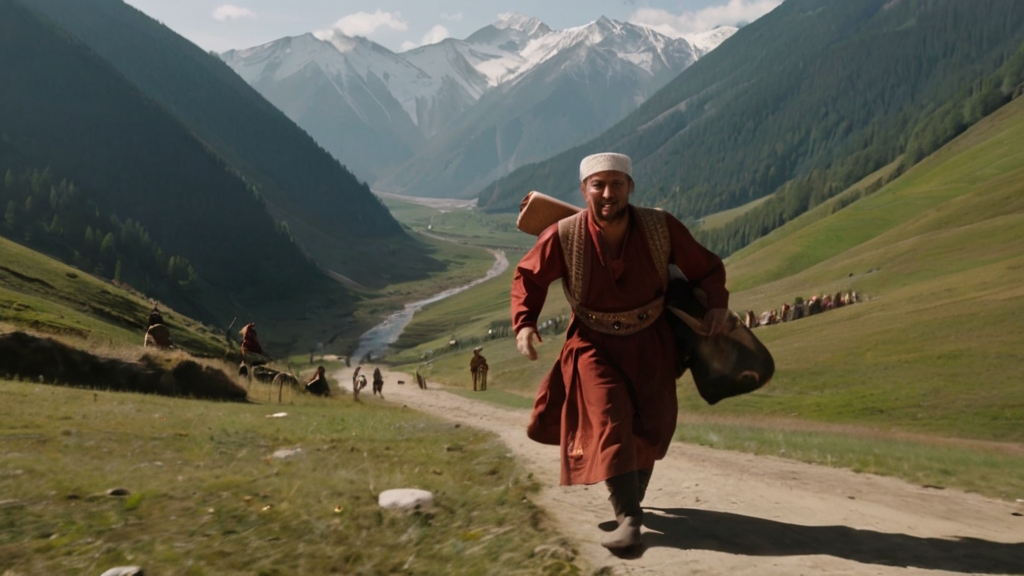
The Muslim population of the Caucasus can look back on a particularly long and diverse Mezalim history. In the course of the Russo-Ottoman wars and the Tsarist expansion in the Caucasus, atrocities were committed against the local Muslims. At the end of the 18th century, and especially after the Russian subjugation of the Nogay and Circassian Adyge settlements in the northern Caucasus, collective crimes of violence were committed against the Muslims from the 1860s onwards. To this day, Circassians around the world commemorate the victims of Tstitsekun (Цыцэкун, German translation: “barbaric mass murder”), which is used as a collective term for the expulsion and ethnic cleansing of their ancestors.
After the October Revolution and the Sovietization of the Caucasus, a new, dark chapter in the Mezalim history of the Muslim Caucasians began. As a collective punitive measure, the communist leadership of the USSR made extensive use of deportations and deported large parts of the Caucasian peoples, such as the Chechens, Ingush, Meskhetians (or Ahiska), Avars and Karachayans, to Central Asia and Siberia. The difficult circumstances of the deportations resulted in tens of thousands of victims.
When the southern Caucasus became a nation state after the end of the First World War, there was widespread ethnic cleansing of the Muslim Azerbaijanis by nationalist Armenian militias such as the Dashnakzutjun, Ramgavar and Hunchak. The inter-communal conflicts between Armenians and Azerbaijanis have shaped the violent relations between the two peoples to this day and reached a climax on February 26, 1992 with the Hodjali genocide, in which over 630 civilians, mostly elderly women and children, were murdered by Armenian occupying troops.
Contact us
Asena Kızıltepe
Head of department Caucasus
a.kiziltepe@mezalim.org
Interview with Doz. Dr. Irade Mammedova
The crimes in Karabakh: ethnic cleansing, massacre or genocide?
The Western public had always ignored the crimes in Armenian-occupied Karabakh. Academia and the media remained silent about the countless crimes committed against Muslim Azerbaijanis. After the end of the 30-year Armenian occupation, the memories of
the war crimes committed against Azerbaijani civilians. Rediscovered mass graves from that time bear witness to crimes that have remained in the dark until today and whose perpetrators went unpunished.
Interview with Rizvan Huseynov
March 31, 1918: Day of the Genocide of the Azerbaijanis – Forschungseinrichtung für Mezalim e.V.
In 1918, the southern Caucasus entered a turbulent phase characterized by political reorganization and burgeoning ethnic tensions. Above all, the oil-rich city of Baku on the Caspian Sea aroused covetousness and Azerbaijan was targeted by the Bolsheviks in Moscow and the ultra-nationalist Armenian Dashnaks. Caught between ideological expansionism and Armenian irredentism, Azerbaijani Muslims were perceived only as a “disruptive factor” and fell victim to an unprecedented campaign of extermination. What remained were half a million victims and a “scar on the soul of the Azerbaijani people”, according to Rızvan Huseynov.
Technical articles in English and German
The different ethnicities existing in the Caucasus continued to live together until the emergence of the Russian-Armenian factor in this region. This coexistence continued without any incidences until 1905; after this date, the Russian administration and Armenian nationalists implemented a genocide policy. They mercilessly massacred large numbers of the Muslim Turkish population and attempted to erase the traces of Turks from history. There are many archival documents showing that the activities of Andranik and Amazasp forces of Armenian origin were supported by foreign powers, especially Russia. These documents show that the Armenian (Dashnak) and Russian (Bolshevik) militias committed torture and genocide not only against the people of Eastern Anatolia in the Ottoman lands, but also against Muslims in the Caucasus.
by Dr. Beşir Mustafayev
